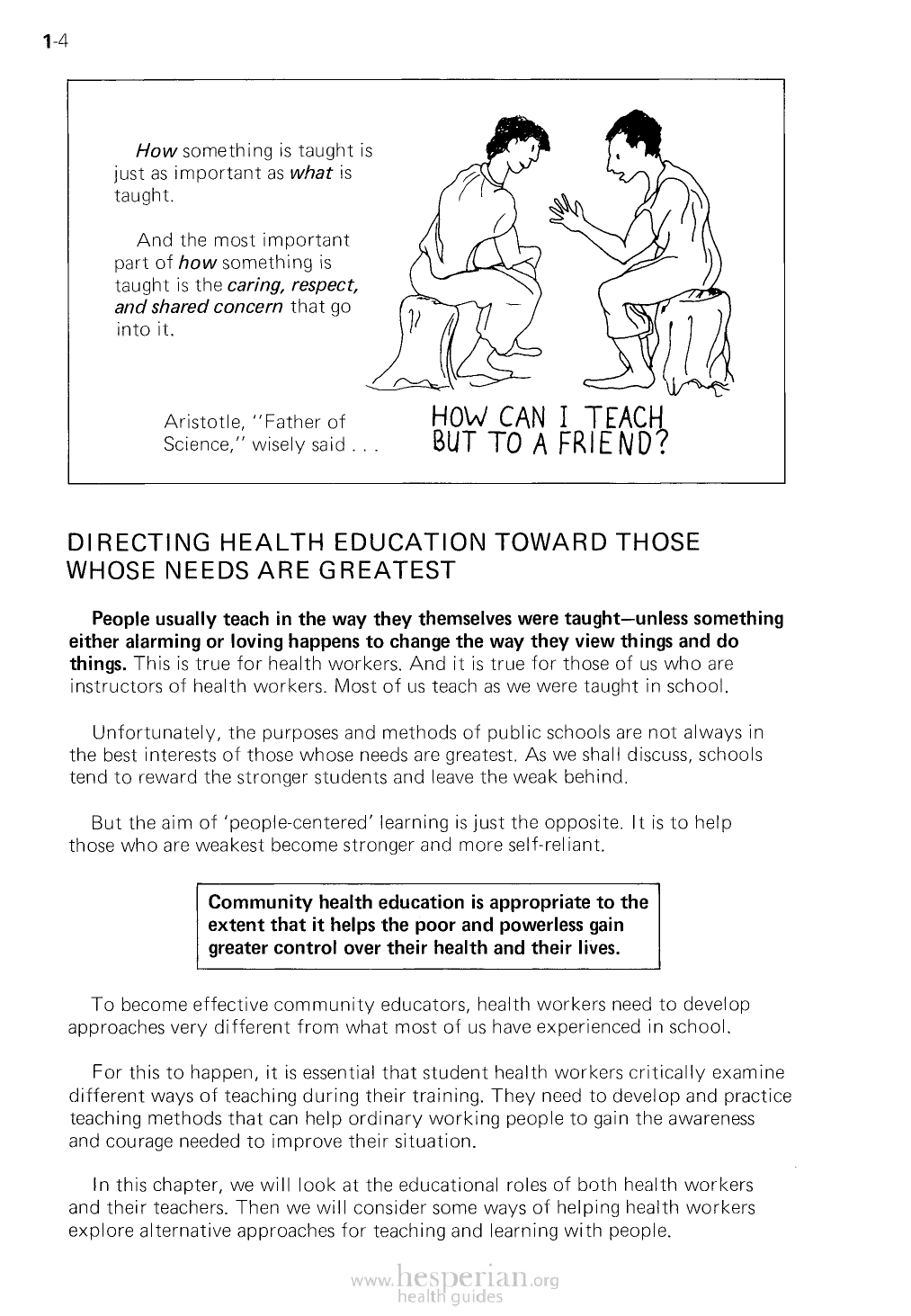
1-4
How something is taught is
just as important as what is
taught.
And the most important
part of how something is
taught is the caring, respect,
and shared concern that go
into it.
Aristotle, “Father of
Science,” wisely said....
DIRECTING HEALTH EDUCATION TOWARD THOSE
WHOSE NEEDS ARE GREATEST
People usually teach in the way they themselves were taught—unless
something either alarming or loving happens to change the way they view
things and do things. This is true for health workers. And it is true for those of us
who are instructors of health workers. Most of us teach as we were taught in school.
Unfortunately, the purposes and methods of public schools are not always in the
best interests of those whose needs are greatest. As we shall discuss, schools tend
to reward the stronger students and leave the weak behind.
But the aim of ‘people-centered’ learning is just the opposite. It is to help those
who are weakest become stronger and more self-reliant.
Community health education is appropriate to the
extent that it helps the poor and powerless gain
greater control over their health and their lives.
To become effective community educators, health workers need to develop
approaches very different from what most of us have experienced in school.
For this to happen, it is essential that student health workers critically examine
different ways of teaching during their training. They need to develop and practice
teaching methods that can help ordinary working people to gain the awareness and
courage needed to improve their situation.
In this chapter, we will look at the educational roles of both health workers and
their teachers. Then we will consider some ways of helping health workers explore
alternative approaches for teaching and learning with people.